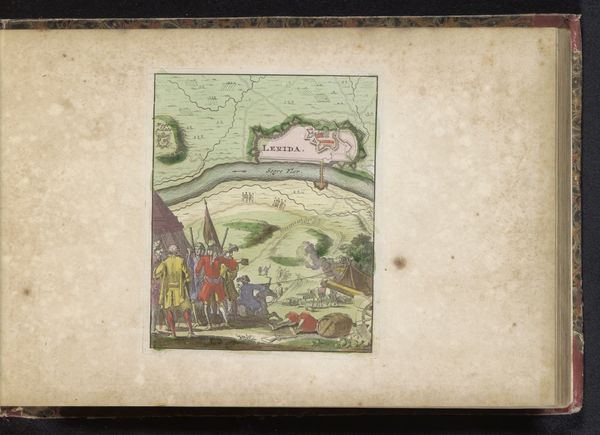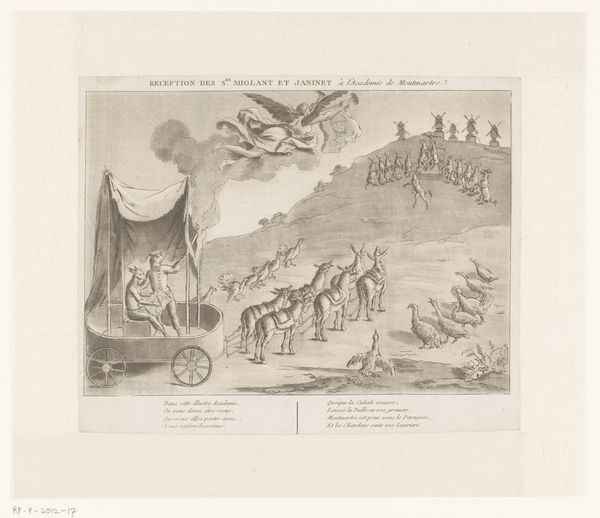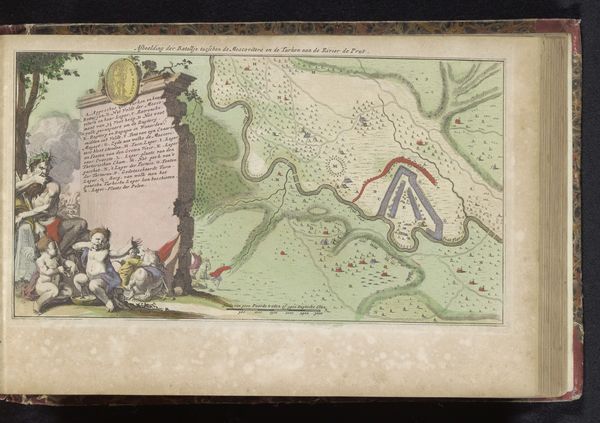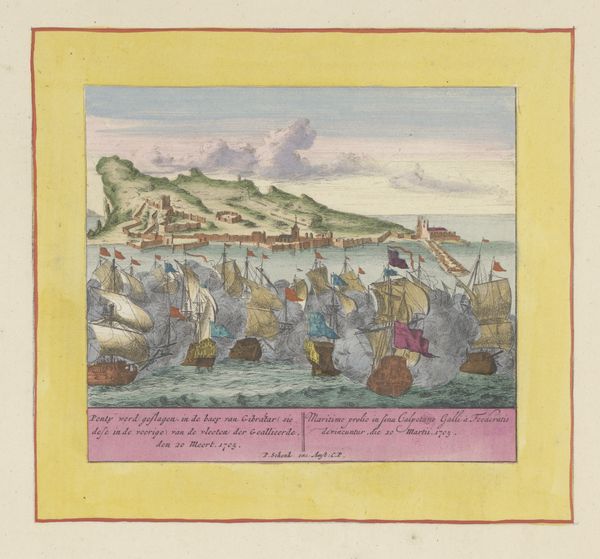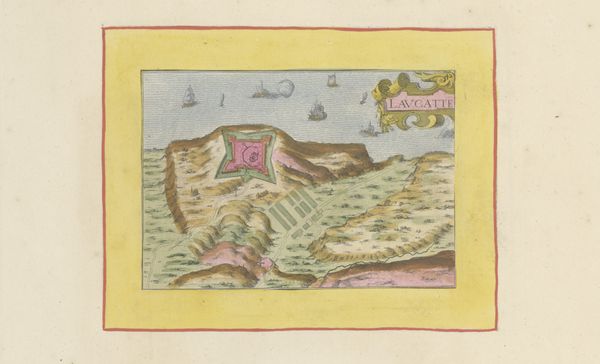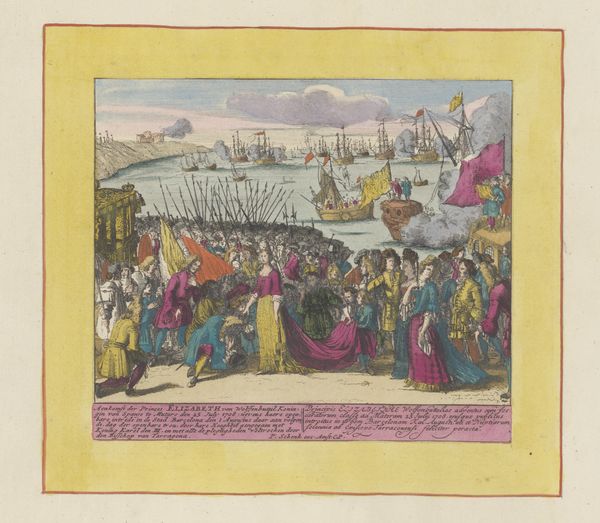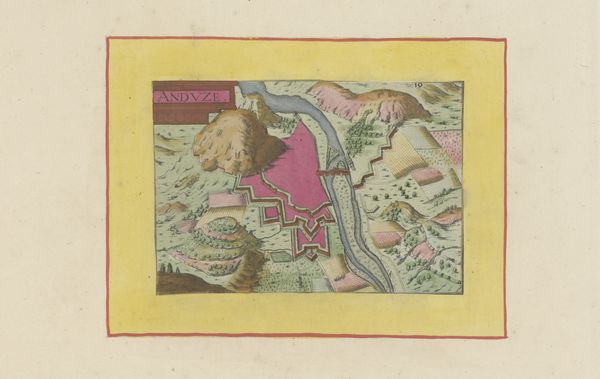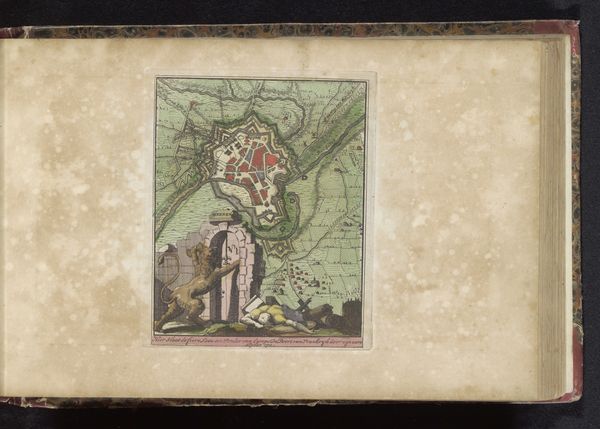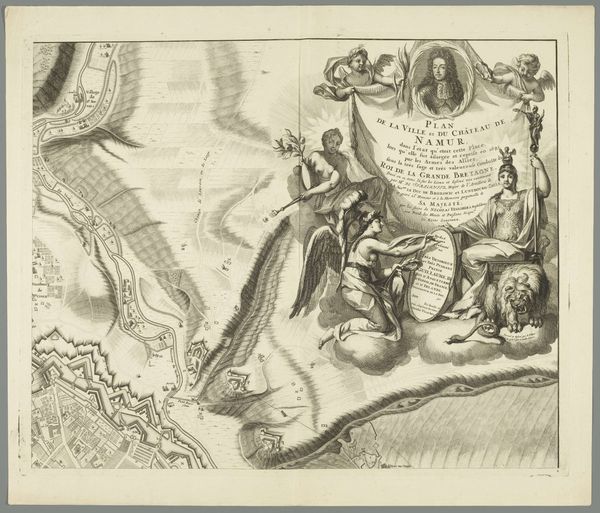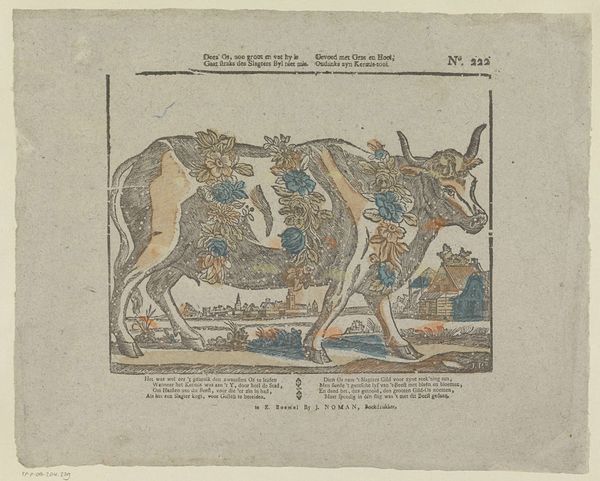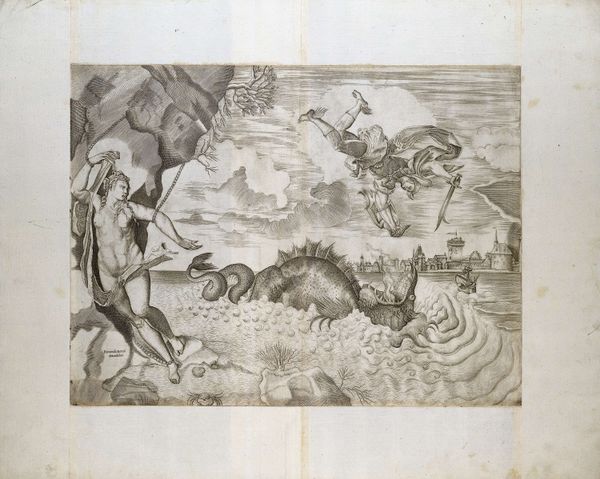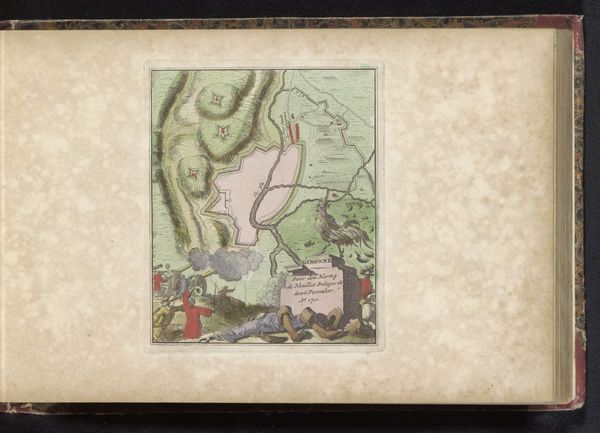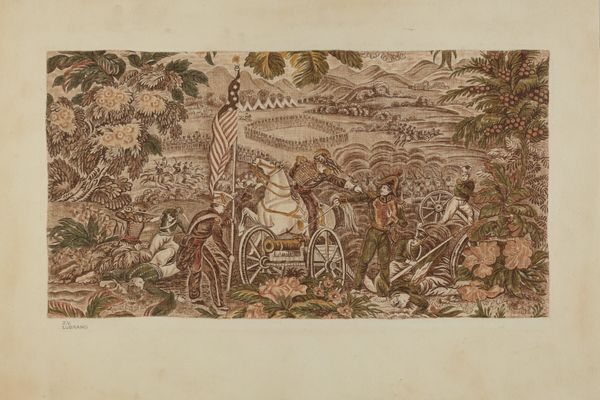
Kaart van monding van de Theems met de Tocht naar Chatham, 1667 1667
0:00
0:00
romeyndehooghe
Rijksmuseum
print, engraving
#
baroque
# print
#
landscape
#
cityscape
#
history-painting
#
engraving
Dimensions: height 345 mm, width 460 mm
Copyright: Rijks Museum: Open Domain
Curator: Editor: Here we have Romeyn de Hooghe's "Kaart van monding van de Theems met de Tocht naar Chatham, 1667," an engraving that feels incredibly detailed for its time. There’s a lot happening here; it almost feels like a propaganda piece disguised as a map. What are your initial thoughts? Curator: It is indeed busy, isn’t it? I’m drawn to consider this not just as a representation of space, but as a crafted object itself, born from specific materials and processes. Look at the engraving, the paper it's printed on - each tells a story of labor and production in 17th century Netherlands. The materiality of the map speaks volumes. What does it suggest to you? Editor: I suppose I hadn’t considered the labor that went into producing all those fine lines! You can see how deliberately each element had to be rendered. Does that level of detail affect the map's value as a historical record, or more as a reflection of the artist's skill and perspective? Curator: That’s a crucial distinction. We often separate "art" from "craft" or "document," but here, those lines blur. The map's informational content cannot be divorced from the method of its production. The cost of materials and specialized labor meant it was not a universally accessible object, informing whose version of the narrative held prominence. Think of it as a material manifestation of power dynamics. Editor: That makes a lot of sense. So, the very act of creating and distributing this detailed engraving reinforces a particular social and political perspective. The skill used in making the work carries additional meanings beyond a simple record. Curator: Precisely. And further, think about who consumed this map and what purposes it served beyond simple navigation or historical record-keeping. How might understanding its creation and dissemination influence its impact and relevance? Editor: So by thinking about the production and how the materials relate to history, the print becomes a physical piece of that history, more than just a rendering of it! Thanks for highlighting all the elements embedded within it.
Comments
No comments
Be the first to comment and join the conversation on the ultimate creative platform.
